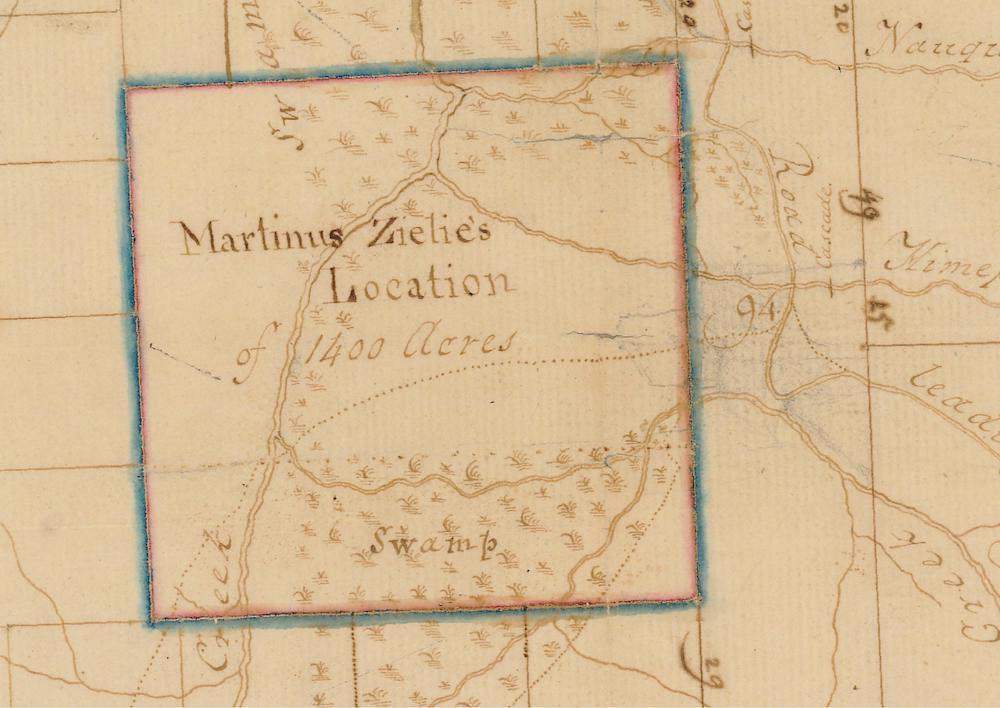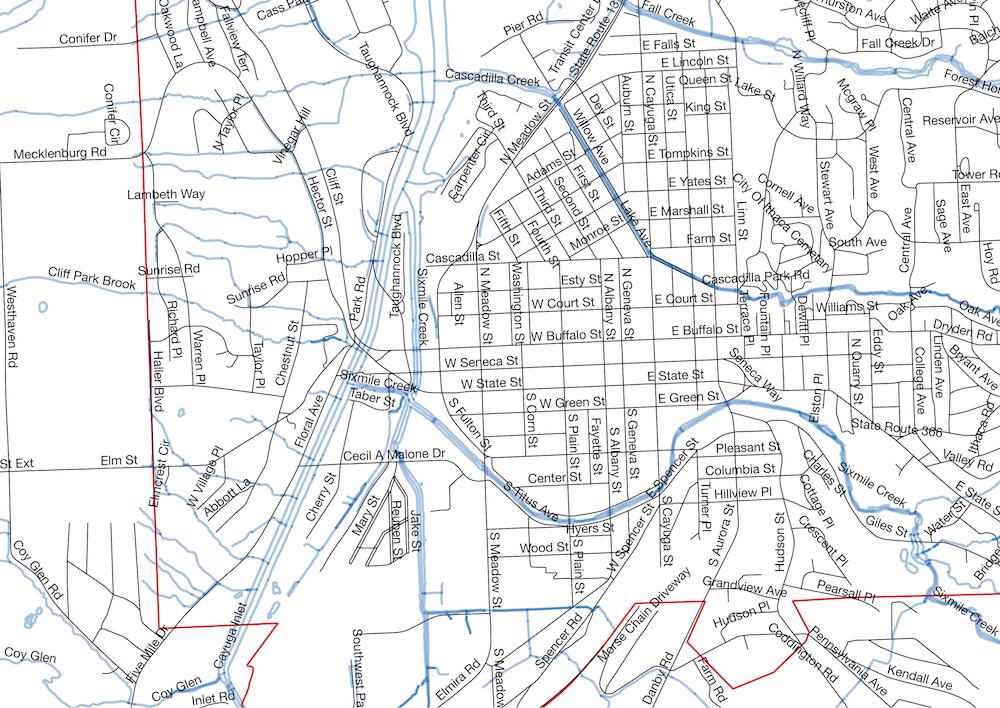

This old map is an excerpt from the military tract survey of the Township of Ulysses made by Moses DeWitt1 in September and October of 1790, under the direction of Simeon DeWitt, the Surveyor General. (See the full map.)
In the center of the image is a lot of 1,400 acres that belonged to Martinus Zielie. These acres were not part of the military tract allotments. None of the other military townships has a set-aside like this.2
Martinus Zielie (1745–1833) was from Schoharie County. He was a lieutenant in the local militia, and served, mostly in his home region, against the British and their First Nations allies during the Revolutionary War. He recruited some number of men into the Continental Army, and was awarded this location as a land bounty by the state in 1782.3
In 1784 he bought a farm near Albany from Abraham Bloodgood (1742–1807). In 1789, unable to pay off his mortgage to Bloodgood, he gave Bloodgood these 1,400 acres in exchange for forbearance on the debt, with the stipulation that he could recover his rights to the land if he paid Bloodgood £250 within a year. He did not manage to pay the redemption fee, and in 1792 Bloodgood sold the land to Simeon DeWitt, who was his son-in-law. A court case to determine whether Zielie had equity rights to the land was settled in 1805 by a ruling in New York's Court for the Trial of Impeachments and Correction of Errors, which awarded Zielie £500 and confirmed DeWitt's title.4 This parcel, along with Lot 94, also owned by DeWitt, was nearly the total of the village of Ithaca, and DeWitt became one of the major figures responsible for Ithaca's development.
If you move the slider to the right, you can see DeWitt's map fade to a modern map of Ithaca. The area of the City of Ithaca west of Tioga Street and north of Wood Street was originally contained within Martinus Zielie's location, and thus was not a part of the military tract allotments. (The red line shows the boundaries of the city.)
The region south of Clinton Street was a swamp in 1790, fed by Six Mile Creek, which enters Zielie's location on the south east side, before splitting. This is the area that was drained by Charles Titus, thus making the south side of Ithaca available for develpement.
The map marks two trails, marked by dotted lines, used by Native Americans. One enters Zielie's at the south west corner, before turning east along what is now Seneca Street. The other begins near the label for Lot 94, currently where Cascadilla Creek crosses Lynn Street, and proceeds south east, before striking a path that became the “Road leading from Cayuga Lake to the Owego Settlement”, which we know as Route 79, or Slaterville Road. The trail crosses Six Mile Creek six miles from its start at Cascadilla Creek.
The creek that enters Zielie's from the south, now replaced by the inlet, is called Negauena Creek. The creeks that enter Zielie's from the east are named (from the top) Nauqueu, or Fall Creek, Himepaugh's Mill Creek (now Cascadilla), and Teegastoweas Creek (now Six Mile Creek).
- Moses was a first cousin of Simeon DeWitt, the Surveyor General of New York, who was in charge of the mapping of all the military tracts. They were both first cousins to DeWitt Clinton. Moses learned surveying from James Clinton, DeWitt's father, who was a brother of George Clinton, the governor of New York from 1777–1795, and again from 1801-1812. DeWitt Clinton himself became governor of New York, and was largely responsible for the construction of the Erie Canal, popularly known as “Dewitt's Ditch”.
Ithaca's Clinton House and Clinton Street were named after DeWitt Clinton. The town of DeWitt, New York was named after Moses DeWitt.
- A high quality scan of the original map is available at the New York State Archives.
- Burkett, B. Z., The Journal of Martinis Zielie 1776–1807, mss., 1979, p. 31. A copy of this manuscript is housed in the New York State Library.
- Caines, George, Cases Argued and Determined in the Court for the Trial of Impeachments and Correction of Errors in the State of New York, third edition, Banks and Brothers, 1883, vol. II, “Abraham Bloodgood, Appellant, against Martinus Zeily, Respondent”, p. 75.